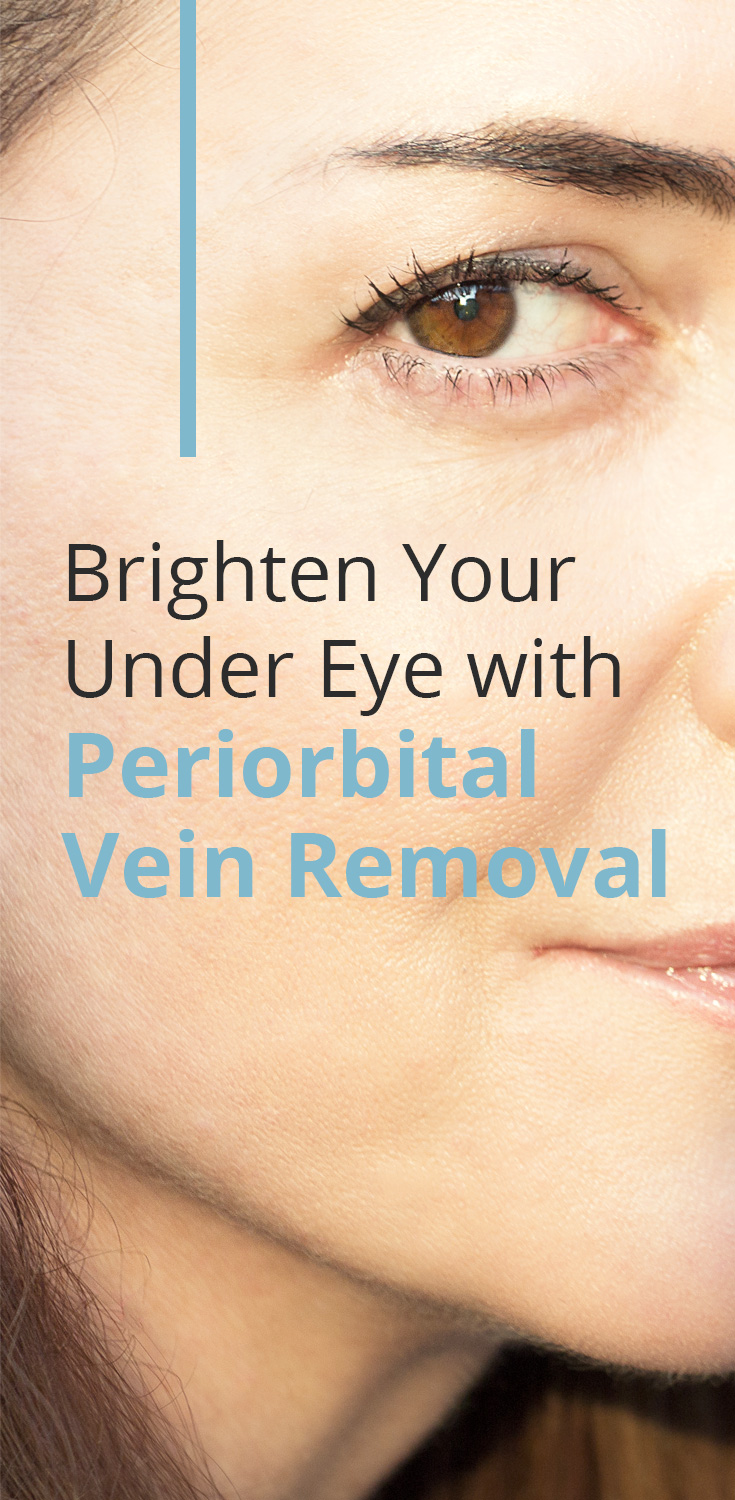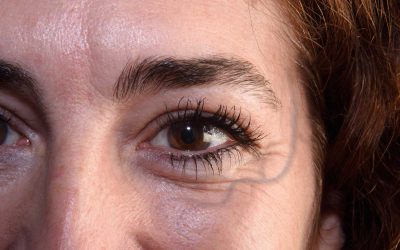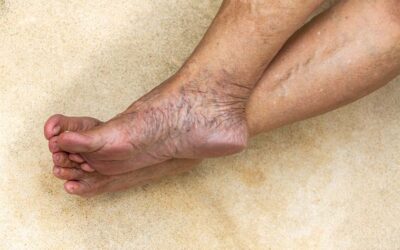Periorbital veins stretch underneath the eye, around the eye socket, and up across the temple. In normal circumstances these veins are invisible under the skin. However, sometimes an under-eye vein or temple vein can become enlarged and therefore more visible due to the thinner skin in these areas of the face. Visible veins are a common aesthetic concern, particularly for fairer-skinned people, as they can appear to darken the area of the eye with blue-green veins.
The natural ageing process, weight loss and genetic predisposition can all be reasons for more prominent veins to appear in the under eye or temple, with patients ranging from their early 20s onwards. Some people find that raised veins become more visible in hot weather, or after they have exercised or taken a hot shower. This is due to the veins dilating to increase blood flow to the surface of the skin in order to improve heat transfer to cooler air outside of the body. However, this can cause some blood vessels to bulge slightly.
Usually, the development of visible periorbital veins is superficial and not a health concern, but some people choose to treat the issue with direct vision sclerotherapy to brighten under eyes or reduce temple vein visibility. Direct vision sclerotherapy has long been used in medicine to treat spider veins, and varicose veins, and is a non-surgical alternative to micro-phlebectomy where a small incision is made in the skin to remove the vein. Micro-phlebectomy may cause a small scar to form, whereas sclerotherapy is a quick procedure that leaves no mark and causes minimal discomfort. With no need for surgery, this is a convenient alternative solution for patients who want to look younger and feel more confident about their appearance.
How Direct Vision Sclerotherapy Works
Before the procedure, all makeup and other skin products are washed off the skin before a tiny needle is inserted into the vein and a colourless solution injected. Using minimal pressure, the clinician can see the solution in the vein and monitor its spread. The specific solution, or sclerosant, we use for periorbital vein removal is called Polidocanol, which has been approved by the US Food and Drug Administration for use in treating spider veins. We inject Polidocanol rather than sodium tetradecyl sulphate as we have seen less inflammation and more uniform results with this sclerosant. Only a very small amount of the sclerosant is used, with any excess quickly diluted by the body, making this a reliable treatment that does not impact other veins around the target area.
Once injected, the sclerosant displaces the blood from the vein and quickly causes fibrosis of the cell lining of the blood vessel, making it collapse. The vein then hardens and is reabsorbed back into the body over the next three to six weeks, reducing its noticeability and brightening the under eye. Several veins can be injected during the same treatment session if you have clusters of spider veins around the periorbital area.
There are 2 possible outcomes when treating periorbital veins. One is full sclerosis of the treated vein and complete clearance. The other is a marked reduction in the size of the vein, to the point that it is barely visible. In these cases, patients may choose to have the vein retreated (top-up treatment) or to just leave it.
Possible side effects can include bruising, swelling, and discomfort, but the majority of patients merely report minimal stinging for a minute or two. It is also a quick procedure, only taking a few minutes, with no recovery time required afterwards. Some patients may be put off by the use of needles, but only the finest needles are used, with the experience of a light scratch or prick on the skin.
Direct vision sclerotherapy has been proven to be an effective means of removing periorbital veins – a common cosmetic concern for a wide spectrum of people. With this reliable, non-invasive technology, we can reduce under eye shadowing and remove dilated and enlarged temple veins.
Key Takeaways
- Visible periorbital veins are usually not a health concern
- People wishing to have the veins removed/resolved can seek direct vision sclerotherapy, which closes off the vein and is absorbed into the body – leaving behind no scars.







